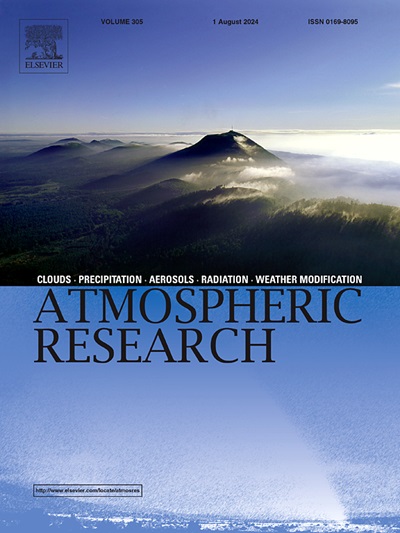Determining the influence of meteorological, environmental, and anthropogenic activity variables on the atmospheric CO2 concentration in the arid and semi-arid regions: A case study in the Middle East
IF 4.5
2区 地球科学
Q1 METEOROLOGY & ATMOSPHERIC SCIENCES
引用次数: 0
Abstract
Climate change and the resulting warming caused by human activities, such as releasing greenhouse gases (GHG), notably carbon dioxide (CO2), are paramount concerns in the contemporary era. Therefore, it is essential to understand spatial and temporal variations of atmospheric carbon dioxide concentration (XCO2) on national and international scales and the role of controlling variables. This research examines the role of controlling variables on XCO2 by utilizing spatiotemporal modeling, correlation analysis, and machine learning methods to determine the sinks and sources of CO2 and their changes in the Middle East (ME). First, XCO2 data from the OCO-2 satellite spanning from 2015 to 2021 were employed for spatiotemporal analysis. The temporal analysis of XCO2 showed peak levels during spring (May) and the lowest levels during summer (September). Additionally, the spatial dispersion of XCO2 revealed significant spatial heterogeneity influenced by land cover. Areas with high vegetation abundance and suitable weather conditions exhibited minimum XCO2 levels, while vice versa occurred. Next, the correlation analysis between the principal controlling variables and XCO2 revealed that, except for vegetation abundance and anthropogenic CO2 emissions, they exhibited predominantly negative and positive correlations throughout the year, respectively. However, the correlation patterns for temperature, precipitation, humidity, and wind speed varied across different months, showing both negative and positive relationships depending on the month. Recognizing that simple correlation alone cannot determine which variables played the most significant role in XCO2 each month, this study employed machine learning and Permutation Feature Importance (PFI) techniques. The results showed that, except for March and September, when precipitation and wind speed respectively had the most significant influence on determining XCO2, air temperature played the dominant role in other months. Additionally, the average monthly results revealed that air temperature, wind speed, precipitation, and vegetation abundance, respectively, played the most significant roles in XCO2. In contrast, CO2 emissions had the most negligible impact. These results highlight the considerable influence of meteorological and environmental variables on regulating XCO2 levels and distributions throughout the ME. By elucidating the seasonality of the carbon cycle and identifying key XCO2 drivers over the ME, this study provides valuable insights to guide regional climate change mitigation policies and further analysis of vulnerable semi-arid ecosystems.
求助全文
约1分钟内获得全文
求助全文
来源期刊

Atmospheric Research
地学-气象与大气科学
CiteScore
9.40
自引率
10.90%
发文量
460
审稿时长
47 days
期刊介绍:
The journal publishes scientific papers (research papers, review articles, letters and notes) dealing with the part of the atmosphere where meteorological events occur. Attention is given to all processes extending from the earth surface to the tropopause, but special emphasis continues to be devoted to the physics of clouds, mesoscale meteorology and air pollution, i.e. atmospheric aerosols; microphysical processes; cloud dynamics and thermodynamics; numerical simulation, climatology, climate change and weather modification.
 求助内容:
求助内容: 应助结果提醒方式:
应助结果提醒方式:


